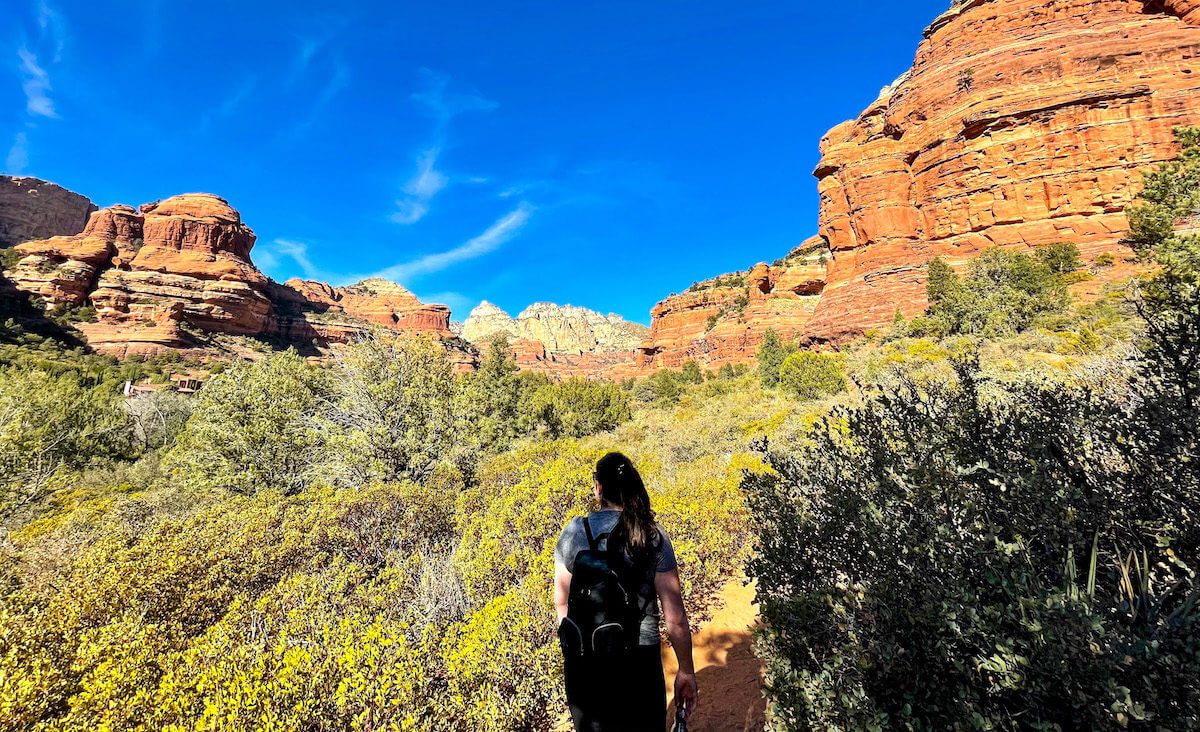Disclaimer: This post may contain affiliate links, but all content is based off our own opinions and experiences. We may receive a commission from purchases made through the links enclosed at no additional cost to you!
If you are like me, you’ve been exploring the great outdoors and hiking more recently. I mean, what else do we have to do with our time? Hiking may seem like a harmless activity, but there are ways that it can have a negative impact on the environment. That is why it’s important to always stay conscious of your impact and to engage in sustainable hiking.
Even in an activity as simple as hiking, there are several tips that you can use to ensure sustainable hiking.
1. Make a plan for sustainable hiking
The first step of sustainable hiking is to make a plan beforehand. Not only does this mean to have a good understanding of the trail route you are going on, but it also means to prepare for your endeavor. By taking the proper precautions when it comes to planning, you’ll have a safer experience and reduce pressure on local services. Some ways to prepare include packing proper gear, clothing, food, water, and safety supplies.
2. Hire a local guide
While this step isn’t always necessary, it can be helpful when hiking areas you aren’t familiar with or when going on multi-day hikes. There are several benefits of hiring a local guide. First, the guide will be familiar with the area and make sure that proper safety precautions are in place. The guide will also be able to educate you on the surroundings so that you know what to expect and know the best way to preserve the natural environment.
3. Leave with what you came with (and ONLY what you came with)
Abide by the saying “leave no trace” and be sure to not leave anything behind. This includes any type of trash or waste that you may produce during your hike. On the flip side, don’t take anything with you that you didn’t come with either. As tempting as it may be to collect that cool-looking rock or pretty flower, it belongs in nature, and that’s where it should stay. This applies to all other aspects of nature too!
4. Stay on marked trails
When going on a hike, there will often be marked trails or paths that direct you the way you need to go. These trails are marked for a reason and should be stuck to. To start, these trails are marked to keep you, the hiker, safe. Additionally, paths are formed as a way to protect the natural environment and wildlife that resides there.
5. Leave wildlife alone
I LOVE animals. I mean, I would cuddle with every animal I see if I could. As much as I wish that the animals would enjoy the cuddles as much as I would, the reality is that they don’t. All jokes aside, approaching or feeding wildlife can be dangerous both for the animal and for you. The best way to care for wildlife is to leave them be and observe them in their natural habitat from afar. Wildlife does not only refer to animals. You should also leave plants alone to not disrupt their growth and environment. This means that people should not pluck flowers, walk over plants, or pick the bark off trees. All these actions disrupt the ecosystem.
6. Abide by fire protection guidelines
Wildfires are becoming more prominent and are destroying vast areas of nature. I am from California and experienced the effects of several wildfires over the last few years. So, I believe this is a tip that not enough people take seriously. Hikers can take easy steps to properly dispose of cigarettes or to extinguish campfires before leaving. Hikers can research fire rules and danger levels ahead of time to prepare to take proper precautions.
7. Pack natural
If you are planning multi-day hikes that involve cooking or washing, pack items that won’t have a negative impact on the environment. Some examples include environmentally-friendly toiletries and cooking supplies or compostable items.
8. Give back
If you are reading this, I would hope that you love nature as much as I do. If so, we can all do our part to give back in protecting the wilderness we love so much. You can do this by donating, volunteering, or educating others. Wherever you visit, check the website to find opportunities to contribute to the conservation of that location.
By taking these simple steps, you will contribute to the well-being of our planet and protect the environment for future generations. Our impact does not stop here. While these eight steps are a good place to start, we can always more action to travel sustainably.



Great tips! I have always hiked solo since I was a kid (mostly due to no one else ever wanting to go with me lol). I love the fact that they now have 2 way text GPS. I always take my In Reach with me, even if it is on my regular daily trail.
Lynda Evan
https://outdoorsactivity.com/